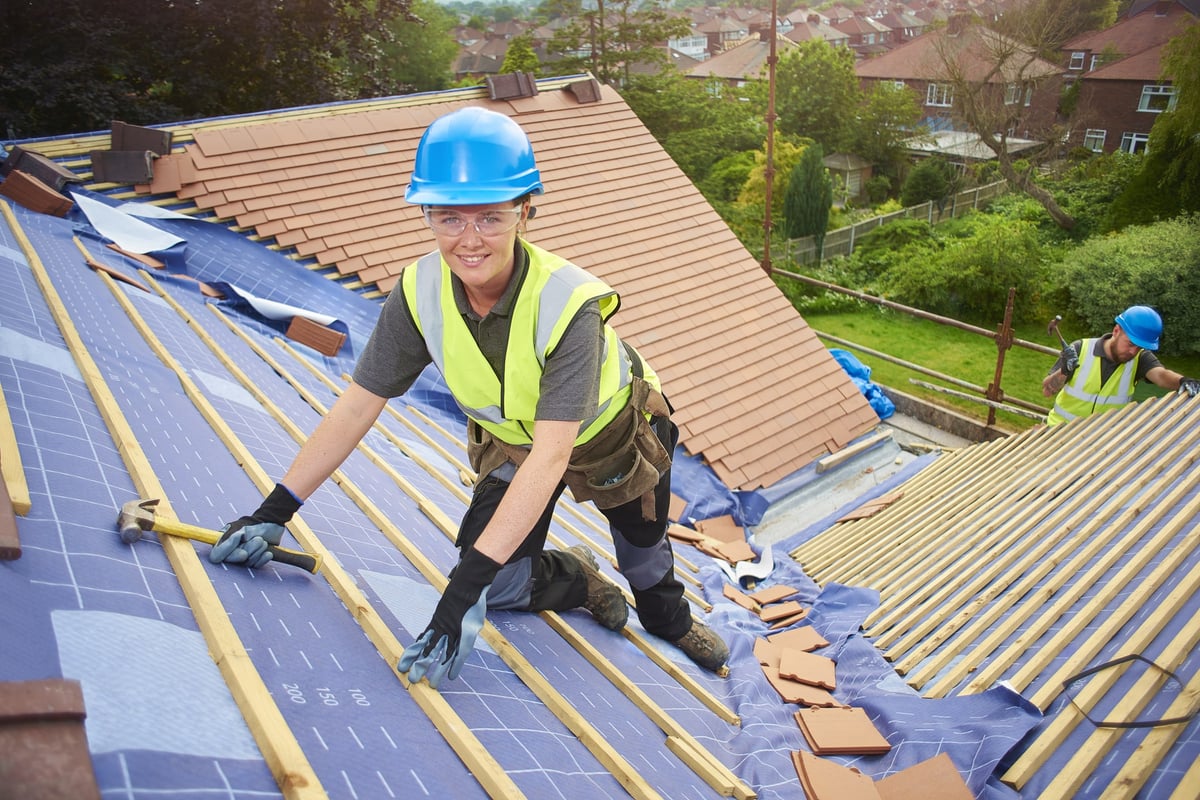Just How to Evaluate Various Roofing Options for Your Building Needs
Examining roof alternatives for your structure needs a comprehensive approach that thinks about different elements such as the meant usage of the framework, regional climate conditions, and material characteristics - Sylvania Roofing Contractor. It is crucial to consider the benefits and disadvantages of various roof types, from asphalt roof shingles to metal and clay ceramic tiles, while also factoring in first expenses and lasting upkeep.
Examining Your Structure's Demands
To effectively evaluate roof covering options, start by extensively examining your structure's requirements. Begin by considering the building's intended use, as various frameworks might demand varying roofing specifications. For instance, residential roof coverings commonly focus on appearances and insulation, while commercial structures may concentrate on longevity and load-bearing capability.
Following, evaluate the local environment conditions that will certainly influence roof performance. Factors such as temperature fluctuations, precipitation degrees, and wind patterns can affect material choice and design. A roof covering system that masters a pleasant climate might not execute too in locations prone to heavy snowfall or extreme warm.
Furthermore, examine the structural honesty of your building. Make certain that the existing framework can support the chosen roof covering products, particularly if thinking about larger options. It is additionally crucial to assess any type of neighborhood building ordinance or policies that might determine details demands for roof.

Comparing Roof Covering Materials
Once a detailed analysis of your building's demands has actually been completed, the next action involves contrasting numerous roof materials. Each material supplies distinctive benefits and negative aspects, making it vital to straighten your choice with your certain requirements and circumstances.
Asphalt tiles are extensively identified for their cost and simplicity of installment, making them a prominent alternative for property buildings. On the other hand, metal roofing, known for its sturdiness and durability, can stand up to extreme climate condition however may feature a higher first financial investment.
Clay and concrete ceramic tiles supply outstanding thermal insulation and aesthetic appeal, specifically for Mediterranean-style design, yet they require a more durable structural assistance because of their weight. Wood trembles deal a natural appearance and excellent insulation residential properties yet may require much more upkeep and are vulnerable to fire hazards.
Evaluating Expense and Budget Plan
Assessing your roof covering alternatives demands a cautious analysis of price and budget plan factors to consider. The general budget plan for a roofing task makes up numerous elements, consisting of product costs, labor expenditures, upkeep, and potential long-term financial savings. It is vital to establish a clear spending plan before discovering details roofing products, as this will assist the decision-making process and assist you avoid overspending.
Begin by getting quotes from numerous specialists to comprehend labor prices in your region. Make sure that these price quotes consist of all required solutions, such as removal of the old roofing, setup, and any type of additional features, like insulation or ventilation renovations - Roofer. Next, examine the price of various roofing products, taking into consideration both preliminary setup expenses and anticipated lifespan

Comprehending Energy Efficiency
Power efficiency plays a crucial role in the choice of roof covering materials and systems, substantially influencing both power consumption and total convenience within a structure. An appropriate roofing system can boost thermal efficiency, lowering the need for home heating and cooling systems, which subsequently decreases power expenses and lessens ecological influence.
When examining roof alternatives, think about products that mirror instead of absorb heat. Light-colored or reflective roof covering items can considerably lower roof surface temperatures, causing read this article lower energy use during hot months. Additionally, correct insulation and ventilation are necessary click resources to maximize the power effectiveness of the whole roof system. Insulation protects against heat transfer, while air flow alleviates warm accumulation in the attic room.
One more important variable is the roofing system's longevity and maintenance needs. Sturdy products that require much less regular substitute add to lasting energy savings. The power efficiency of a roofing system can likewise be evaluated through its conformity with established sustainability ratings such as Power STAR or LEED.
Considering Aesthetic Allure
A roofing's visual charm considerably affects the general look of a structure, complementing its building style and boosting aesthetic charm. Roofing Contractor. When reviewing roof choices, it is important to think about just how the chosen product, color, and style will certainly integrate with the existing structure and neighborhood. A well-designed roof covering can elevate even the most basic of buildings, changing them right into aesthetic centerpieces
Different roofing materials use various visual high qualities. Standard shingles may evoke a classic appeal, while metal roof can present a modern, sleek look. Additionally, the color of the roofing product plays an important function; lighter shades can make a building appear even more large, while darker tones might develop a cozier setting.
Moreover, architectural components, such as dormers and eaves, can enhance the roofing's aesthetic effect. It is a good idea to talk to professional developers or engineers to make sure the picked roofing alternative straightens with the general design intent. Eventually, a roof needs to not just offer practical advantages yet likewise contribute favorably to the structure's aesthetic, mirroring the proprietor's taste and the personality of the surrounding atmosphere.
Conclusion
